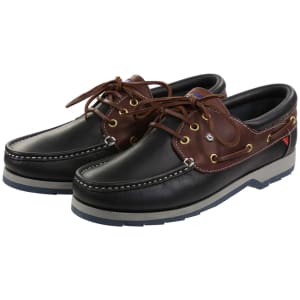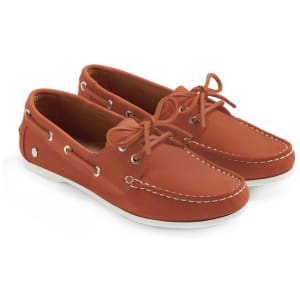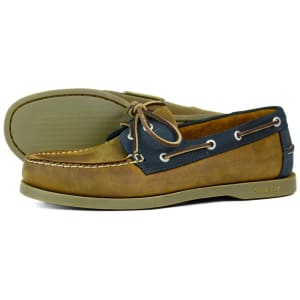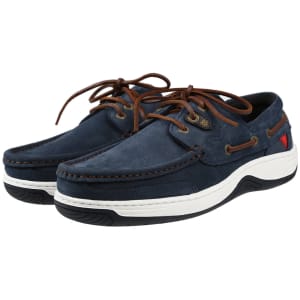
Boat Shoes and Deck Shoes – What’s The Difference?
“Boat shoes” and “deck shoes” are today used interchangeably, and it is important to note that the concept is now more about style than the traditional function of the shoe. However, historically there were some slight differences between them. Both types of shoes were designed for boating and maritime activities, offering good traction on wet surfaces and providing comfort for extended periods on board. Nevertheless, there were variations in style and construction that set them apart. Here’s a breakdown of the key differences:
1. Origins
Boat shoes originated in the United States in the 1930s and were popularised by the brand Sperry Top-Sider. On the other hand, deck shoes have British origins and were initially associated with sailors in the British Navy. Additionally, these type of shoes were sometimes a status symbol, suggesting ownership of a boat and therefore wealth.
2. Sole Construction
Boat shoes typically had a non-marking rubber sole with a siping pattern. The non-marking sole is traditionally white, but many modern versions are often dark. “Siping” refers to the razor-like cuts on the sole that help improve traction on wet surfaces. Deck shoes, on the other hand, may feature a traditional rubber sole or a sole made of a combination of rubber and leather.
3. Lacing System
Boat shoes traditionally have a 360-degree lacing system, with leather laces threaded through eyelets that go all the way around the shoe. This design provides a customised fit and better stability. Deck shoes often have a simpler two-eyelet lacing system. Alternatively, they may even be slip-on, featuring elastic or bungee laces for convenience.
The Dubarry Commander Deck Shoes (left) exhibit a fully adjustable lacing system that goes around the whole shoe. Meanwhile, the Women’s Dubarry Belize Slip On Deck Shoes (right) present a more casual design.
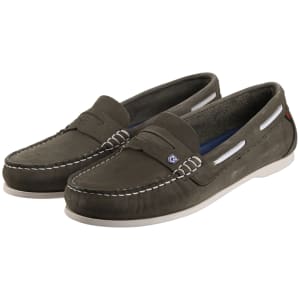
4. Style and Design
While there is some overlap in style, boat shoes are often associated with a more casual and sporty aesthetic. They typically feature leather or suede uppers with a moccasin-like construction and decorative stitching around the toe. Deck shoes, on the other hand, may have a slightly more formal appearance, with cleaner lines and a simpler overall design. Furthermore, men’s deck shoes and women’s deck shoes are similar in style, often combining as unisex footwear.
Key Point:
Modern versions of boat and deck shoes take some or all of these elements and use them as a stylistic feature rather than a functional one.
Why Are They Called Deck Shoes?
Deck shoes are named because they were originally used on the deck of a boat or ship. The term “deck shoes” emphasises their purpose as footwear specifically suited for the maritime environment and the activities associated with it.
The construction and features of deck shoes provide traction and stability on the wet and slippery surfaces of boat decks. The rubber soles with siping patterns, along with the lacing systems, can prevent slipping and sliding. The overall design of the shoes focuses on comfort, durability, and practicality, making them suitable for long hours spent on a boat or ship.
Additionally, deck shoes often have non-marking soles, meaning they won’t leave scuff marks or damage the deck surface. This feature is essential to maintain the cleanliness and integrity of the boat’s deck.
Over time, the term “deck shoes” has become synonymous with this specific type of footwear. It is now widely used to describe shoes that share the same characteristics and functionality, whether used on a boat or not.
It’s worth noting that the terms “boat shoes” and “deck shoes” are often used interchangeably in everyday conversation. As a result, many manufacturers and brands may use the terms interchangeably as well. Ultimately, the choice between boat shoes and deck shoes comes down to personal preference and the specific features and style that suit your needs.

